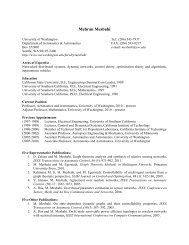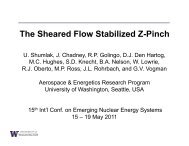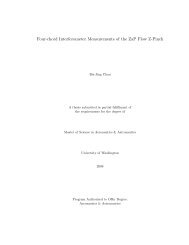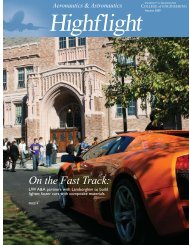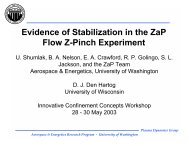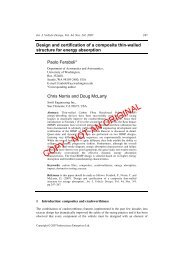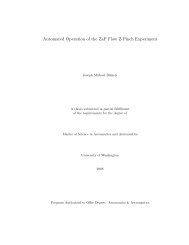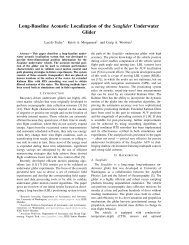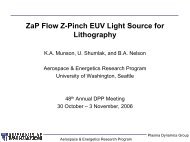Distributed Reactive Collision Avoidance - University of Washington
Distributed Reactive Collision Avoidance - University of Washington
Distributed Reactive Collision Avoidance - University of Washington
You also want an ePaper? Increase the reach of your titles
YUMPU automatically turns print PDFs into web optimized ePapers that Google loves.
<strong>University</strong> <strong>of</strong> <strong>Washington</strong><br />
Abstract<br />
<strong>Distributed</strong> <strong>Reactive</strong> <strong>Collision</strong> <strong>Avoidance</strong><br />
Emmett Lalish<br />
Chair <strong>of</strong> the Supervisory Committee:<br />
Pr<strong>of</strong>essor Kristi A. Morgansen<br />
Aeronautics and Astronautics<br />
<strong>Collision</strong> avoidance is an important aspect <strong>of</strong> multivehicle coordination because it prevents<br />
vehicles from disrupting or destroying each other. The work contained in this dissertation<br />
concerns a novel approach to the n-vehicle collision avoidance problem. The vehicle model<br />
used here allows for three-dimensional movement and represents a wide range <strong>of</strong> vehicles.<br />
The algorithm works in conjunction with any desired controller to guarantee all vehicles<br />
remain free <strong>of</strong> collisions while attempting to follow their desired control. This algorithm<br />
is reactive and distributed, making it well-suited for real-time applications, and explicitly<br />
accounts for actuation limits. A robustness analysis is presented which provides a means to<br />
account for delays and unmodeled dynamics. Robustness to an adversarial vehicle is also<br />
presented.



